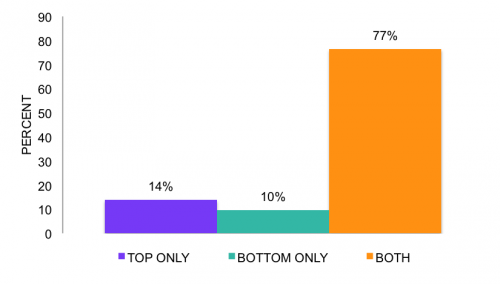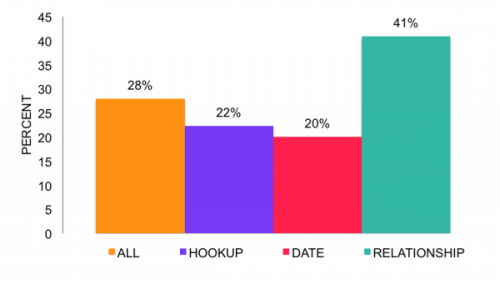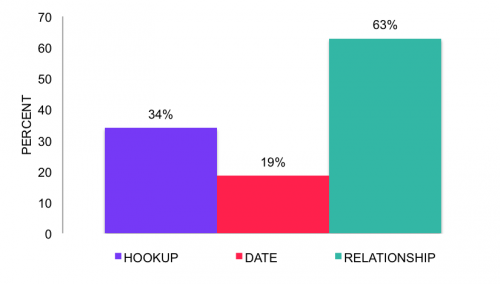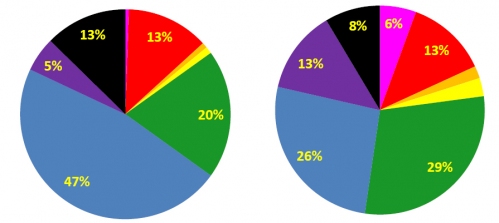 A substantial body of literature suggests that women change what they eat when they eat with men. Specifically, women opt for smaller amounts and lower-calorie foods associated with femininity. So, some scholars argue that women change what they eat to appear more feminine when dining with male companions.
A substantial body of literature suggests that women change what they eat when they eat with men. Specifically, women opt for smaller amounts and lower-calorie foods associated with femininity. So, some scholars argue that women change what they eat to appear more feminine when dining with male companions.
For my senior thesis, I explored whether women change the way they eat alongside what they eat when dining with a male vs. female companion. To examine this phenomenon, I conducted 42 hours of non-participant observation in two four-star American restaurants in a large west coast city in the United States. I observed the eating behaviors of 76 Euro-American women (37 dining with a male companion and 39 dining with a female companion) aged approximately 18 to 40 to identify differences in their eating behaviors.
I found that women did change the way they ate depending on the gender of their dining companion. Overall, when dining with a male companion, women typically constructed their bites carefully, took small bites, ate slowly, used their napkins precisely and frequently, and maintained good posture and limited body movement throughout their meals. In contrast, women dining with a female companion generally constructed their bites more haphazardly, took larger bites, used their napkins more loosely and sparingly, and moved their bodies more throughout their meals.

On the size of bites, here’s an excerpt from my field notes:
Though her plate is filled, each bite she labors onto her fork barely fills the utensil. Perhaps she’s getting full because each bite seems smaller than the last… and still she’s taking tiny bites. Somehow she has made a single vegetable last for more than five bites.
I also observed many women who were about to take a large bite but stopped themselves. Another excerpt:
She spreads a cracker generously and brings it to her mouth. Then she pauses for a moment as though she’s sizing up the cracker to decide if she can manage it in one bite. After thinking for a minute, she bites off half and gently places the rest of the cracker back down on her individual plate.
Stopping to reconstruct large bites into smaller ones is a feminine eating behavior that implies a conscious monitoring of bite size. It indicates that women may deliberately change their behavior to appear more feminine.
I also observed changes in the ways women used their napkins when dining with a male vs. female companion. When their companion was a man, women used their napkins more precisely and frequently than when their companion was another woman. In some cases, the woman would fold her napkin into fourths before using it so that she could press the straight edge of the napkin to the corners of her mouth. Other times, the woman would wrap the napkin around her finger to create a point, then dab it across her mouth or use the point to press into the corners of her mouth. Women who used their napkins precisely also tended to use them quite frequently:
Using her napkin to dab the edges of her mouth – finger in it to make a tiny point, she is using her napkin constantly… using the point of the napkin to specifically dab each corner of her mouth. She is using the napkin again even though she has not taken a single bite since the last time she used it… using napkin after literally every bite as if she is constantly scared she has food on her mouth. Using and refolding her napkin every two minutes, always dabbing the corners of her mouth lightly.
In contrast, women dining with a female companion generally used their napkins more loosely and sparingly. These women did not carefully designate a specific area of the napkin to use, and instead bunched up a portion of it in one hand and rubbed the napkin across their mouths indiscriminately.
Each of the behaviors observed more frequently among women dining with a male companion versus a female one was stereotypically feminine. Many of the behaviors that emerged as significant among women dining with a female companion, on the other hand, are considered non-feminine, i.e. behaviors that women are instructed to avoid. Behavioral differences between the two groups of women suggest two things. First, women eat in a manner more consistent with normative femininity when in the presence of a male versus a female companion. And, second, gender is something that people perform when cued to do so, not necessarily something people internalize and express all the time.
Cross-posted at Pacific Standard.
Kate Handley graduated from Occidental College this month. This post is based on her senior thesis. After gaining some experience in the tech industry, she hopes to pursue a PhD in Sociology.





